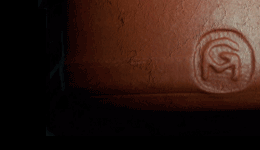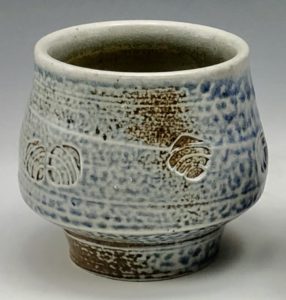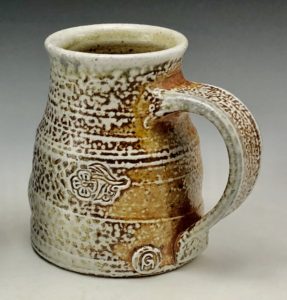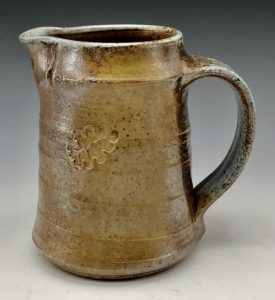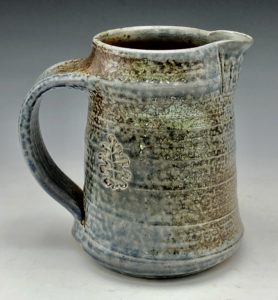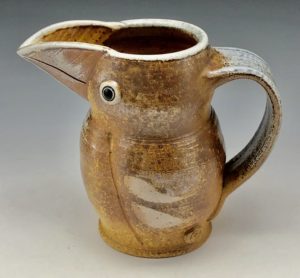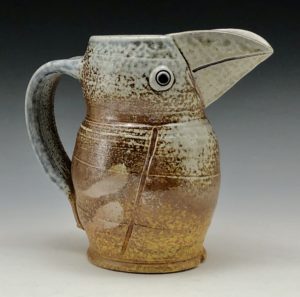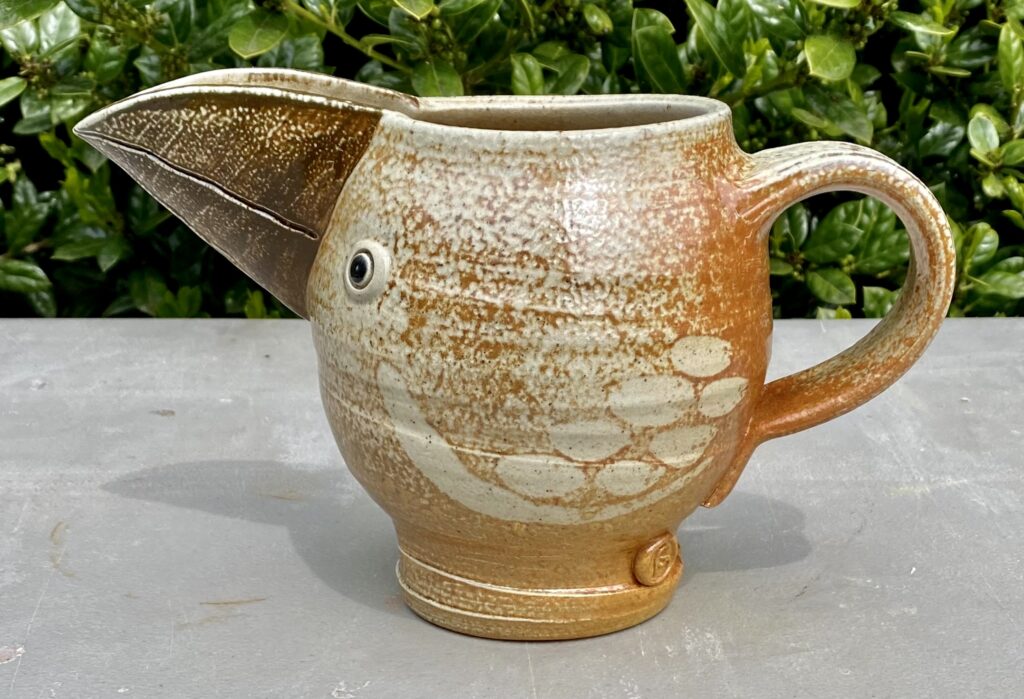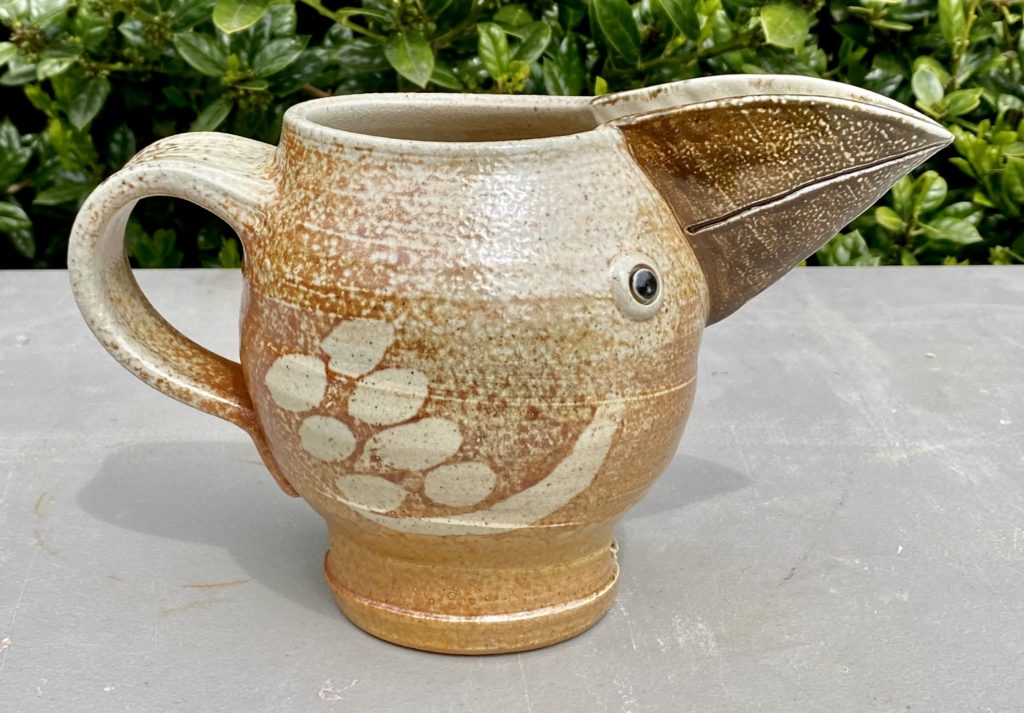In a comment on yesterday’s blog Lynda asks me to explain why I might like to re-fire a couple of pieces in an upcoming soda firing. Most of the time the heat, flame and soda combine to give interesting, pleasing surfaces all around the pots when the kiln has reached its top temperatures.. in our case cones 10 to 12. Flashing slips can produce orange peel or toasty warm satiny surfaces, but sometimes an area will be masked from the moving flame and the soda it carries around the ware and will be ‘flat’ or dry and a dull colour.
My experience has been that if I have a piece that is a good form but has a dry patch like that and I put it in a firing again, and it is placed so that flame hits that area, the resultant piece is super juicily smooth and orange peel-ey. A mug and a wee yunomi from my previous group of pots in January’s firing were re-fired this time and they’re now fine.
When I’m assembling photos for a blog of course I choose to show you the good side! but now, Lynda, I’ll show both sides so that you can see the difference. In fact the autumnal oak leaf colour is perfectly all right but I am curious to see if I can get the two sides to be more alike.
Another example is this jugbird. Some folks may find the differing two sides to be fine, and I may not re-fire it but I’m open to comments on this.
Salt creates a different result. I’m not sure why but when salt is inserted into the very hot kiln it disperses amongst the pots more efficiently. There’s no denying that I prefer to find the characteristic orange peel all around the pots. Salt firing doesn’t happen here in the Lower Mainland. It’s not something folks do in a built-up area so the kilns I’ve been lucky enough to have my work fired in have been out in the Fraser Valley, marvellously for a month in the salt kiln at Medalta in Medicine Hat and one special occasion when I joined a workshop with Jackie Frioud at Tidal Arts Centre in Lund. I also appreciate that salt is harder on the kiln walls and shelves so it’s a rare treat for me.
Now to admit what I did recently. I follow Dan Finnegan of Fredericksburg, Virginia, on Instagram on the recommendation of Ontario potter Tony Clennell. He told me that I should meet Dan one day as Dan makes birds too. His birds are delightfully whimsical and are often included in incredible scenes of books, rooms, tales.. and are fired alongside his completely functional pots.. in salt. His Instagram handle is dan_finnegan_pottery.
https://danfinneganpottery.com
One day I enthusiastically commented that I’d love to have a pot fired in one of his excellent firings. What a nerve! He replied.. ‘send one’. I did, and today Dan has sent me a photo of both sides of my salt-fired jugbird! Happy day!
I’m so delighted to see the contrast between the bill, which I painted with a teal-stained terra sigillata, and the warm red body with perfect orange peel. The wax resist patterns to indicate bird wings are inspired by Mick Casson’s salty pots in the Victoria & Albert Museum, London. Many thanks Dan, for finding room for a jugbird from a faraway, mad-keen admirer in Canada, and for the photographs.
